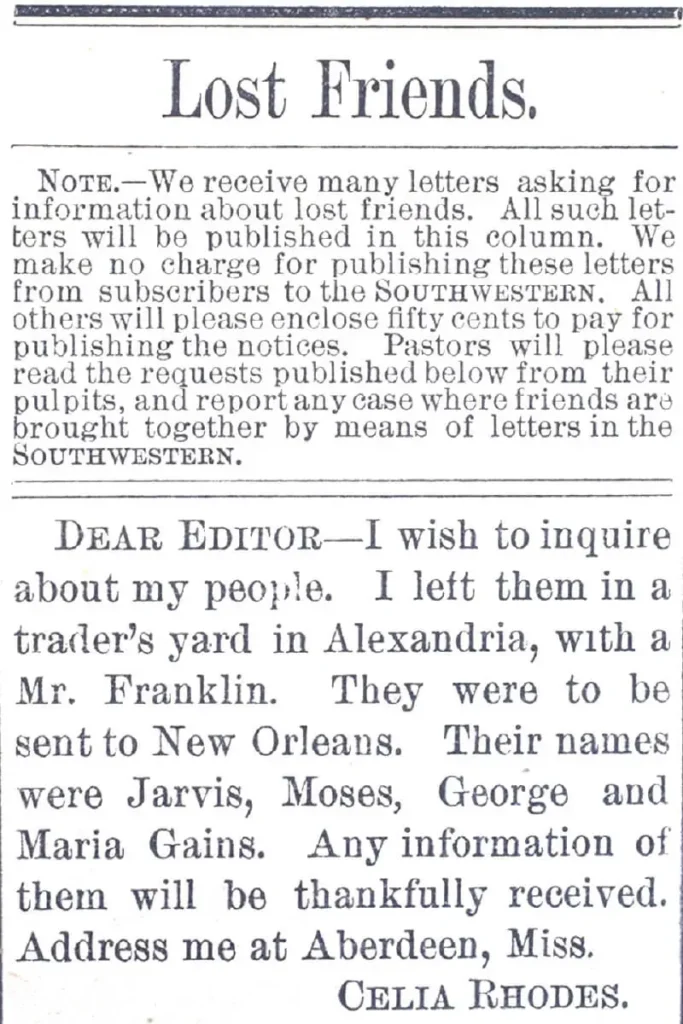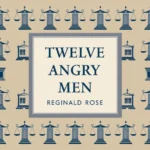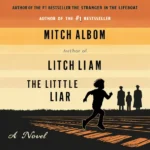Introduction
Have you ever stumbled upon a book that tugs at your heartstrings and leaves a lasting impression? That’s exactly what “The Book of Lost Friends PDF” by Lisa Wingate does. This novel intricately weaves together the past and present, unveiling stories of resilience, hope, and the quest for identity. In this article, we’ll delve deep into the world created by Wingate, exploring its characters, themes, and the historical context that makes it so compelling.
| Name of PDF | The Book of Lost Friends PDF |
|---|---|
| No Pages | 283 |
| Author | Lisa Wingate |
| Originally Published | April 7, 2020 |
| Language | English |
| Genres | Historical Fiction, Southern Fiction |
| Size | 0.3 MB |
| Chek, latest edition |
The Dictionary of Lost Words PDF
Table of Contents
About the Author: Lisa Wingate
Lisa Wingate is no stranger to crafting captivating tales that resonate with readers. With a background in journalism and an impressive bibliography, Wingate has a knack for bringing historical events to life through relatable characters and poignant narratives. Her previous works, such as “Before We Were Yours,” have garnered critical acclaim and a loyal readership. Wingate’s writing style is characterized by its rich detail, emotional depth, and seamless blending of historical and fictional elements.

Plot Summary
“The Book of Lost Friends” transports readers to two distinct timelines: post-Civil War South and modern-day Louisiana. The story follows Hannie Gossett, a freed slave searching for her family in the aftermath of the Civil War, and Benny Silva, a young teacher discovering the power of history in her students’ lives. Their journeys, though separated by time, intersect in profound ways, revealing hidden truths and forging unexpected connections.
Main Characters
Hannie Gossett
Hannie is a determined and courageous freedwoman whose quest to reunite with her lost family drives much of the novel’s plot. Her resilience and resourcefulness make her a compelling protagonist, and her story sheds light on the struggles faced by countless freed slaves during Reconstruction.
Benny Silva
Benny is a modern-day teacher who stumbles upon Hannie’s story while trying to engage her students with local history. Her discovery of the Lost Friends letters becomes a catalyst for personal and communal transformation. Benny’s journey from an outsider to a beloved mentor underscores the novel’s themes of connection and belonging.
Other Significant Characters
The novel is populated with a rich cast of supporting characters, each adding depth and complexity to the story. From Hannie’s fellow travelers to Benny’s students, these characters enrich the narrative and highlight different facets of the human experience.
Setting
Post-Civil War South
The novel vividly depicts the tumultuous period following the Civil War, a time when freed slaves were navigating a new, uncertain reality. The setting underscores the challenges and hopes of Reconstruction, providing a backdrop for Hannie’s quest.
Modern-Day Louisiana
Benny’s story unfolds in a small, contemporary Louisiana town, where the echoes of the past still resonate. The juxtaposition of these two settings enhances the novel’s exploration of how history shapes the present.
Importance of Setting in the Narrative
The dual settings are not just backdrops but active elements in the story. They ground the characters’ experiences in specific historical and cultural contexts, enriching the narrative’s authenticity and emotional impact.
Themes Explored
Family and Ancestry
The search for lost family members is at the heart of both Hannie’s and Benny’s stories. This theme underscores the importance of understanding one’s roots and the powerful bonds of kinship.
Slavery and Its Aftermath
Wingate does not shy away from depicting the brutal realities of slavery and its lingering effects. Through Hannie’s journey, readers gain insight into the enduring trauma and resilience of those who lived through this dark chapter in history.
Search for Identity and Belonging
Both main characters are on a quest for identity and belonging. Hannie seeks to reclaim her family and heritage, while Benny strives to connect with her students and find her place in the community. Their parallel journeys highlight the universal human desire for connection and self-discovery.
The Historical Context
The Lost Friends Advertisements
Central to the novel are the Lost Friends advertisements, real historical notices published by freed slaves seeking lost relatives. These poignant pleas for reconnection serve as a powerful reminder of the human cost of slavery and the enduring hope for reunion.
Real-Life Inspirations
Wingate drew inspiration from these historical documents, weaving them into her fictional narrative to create a story that is both grounded in reality and rich with imagination. The incorporation of these real-life elements adds depth and authenticity to the novel.

Dual Timelines
Structure of the Novel
The novel’s structure, alternating between Hannie’s post-Civil War journey and Benny’s modern-day discoveries, creates a dynamic and engaging reading experience. This dual timeline approach allows for a richer exploration of themes and characters.
Impact on Storytelling
The dual timelines enhance the storytelling by providing multiple perspectives and highlighting the connections between past and present. This narrative technique keeps readers invested in both storylines and emphasizes the novel’s overarching messages about history and memory.
Character Development
Growth of Hannie Gossett
Hannie’s character arc is marked by her transformation from a determined but desperate freedwoman to a figure of strength and resilience. Her growth is both inspiring and heartbreaking, reflecting the broader struggles of her time.
Evolution of Benny Silva
Benny’s journey from a disconnected teacher to a passionate advocate for her students mirrors Hannie’s quest for family. Her evolution underscores the novel’s themes of connection, education, and the power of history to shape our lives.
Symbolism and Motifs
Significance of the Lost Friends Letters
The Lost Friends letters symbolize the enduring human desire for connection and the pain of separation. They serve as a tangible link between the past and present, highlighting the novel’s exploration of memory and legacy.
Other Recurring Symbols
Other symbols, such as Hannie’s keepsakes and the historical artifacts Benny uncovers, reinforce the novel’s themes of memory, heritage, and the passage of time. These motifs add layers of meaning and resonance to the story.
Literary Style
Narrative Techniques
Wingate employs a variety of narrative techniques to bring her story to life, including vivid descriptions, alternating perspectives, and a seamless blend of historical and fictional elements. These techniques create a rich, immersive reading experience.
Use of Language and Imagery
Wingate’s prose is characterized by its lyrical quality and evocative imagery. Her descriptions of the Southern landscape, the characters’ emotions, and the historical settings are both beautiful and haunting, adding depth and texture to the narrative.
Critical Reception
Reviews and Accolades
“The Book of Lost Friends” has received widespread acclaim for its compelling storytelling, well-drawn characters, and historical accuracy. Critics have praised Wingate’s ability to blend fact and fiction, creating a narrative that is both informative and deeply moving.
Reader Responses
Readers have also responded enthusiastically to the novel, often citing its emotional impact and the relevance of its themes. Many have found Hannie’s and Benny’s stories to be both inspiring and thought-provoking, prompting reflection on their own family histories and connections.
Impact and Legacy
Influence on Readers and Literature
“The Book of Lost Friends” has had a significant impact on readers, encouraging many to explore their own ancestry and consider the legacies of history. The novel has also contributed to the broader genre of historical fiction, showcasing the power of storytelling to illuminate the past.
Contributions to Historical Fiction
By blending historical facts with rich, imaginative storytelling, Wingate has created a novel that stands out in the genre. “The Book of Lost Friends” not only entertains but also educates, offering readers a deeper understanding of a pivotal period in American history.
Personal Reflection
My Thoughts on the Novel
Personally, I found “The Book of Lost Friends” to be a profoundly moving and thought-provoking read. The dual timelines, richly drawn characters, and historical context combined to create a narrative that stayed with me long after I turned the last page.
Memorable Moments and Quotes
One of the most memorable aspects of the novel was the poignancy of the Lost Friends letters. These heartfelt pleas for reconnection were both heartbreaking and hopeful, reminding me of the enduring human spirit and the power of hope.
Conclusion: The Book of Lost Friends PDF
In conclusion, “The Book of Lost Friends” by Lisa Wingate is a masterful blend of historical fiction and heartfelt storytelling. Through the parallel journeys of Hannie and Benny, Wingate explores themes of family, identity, and the lasting impact of history. This novel is a testament to the resilience of the human spirit and the enduring power of hope and connection.
FAQs about The Book of Lost Friends PDF
What inspired Lisa Wingate to write “The Book of Lost Friends”?
Lisa Wingate was inspired by the real-life Lost Friends advertisements, which were published by freed slaves seeking lost relatives after the Civil War. These historical documents provided a poignant backdrop for her fictional narrative.
How accurate is the historical portrayal in the novel?
While “The Book of Lost Friends” is a work of fiction, Wingate conducted extensive research to ensure historical accuracy. The depiction of the post-Civil War South and the Lost Friends advertisements is rooted in real events and experiences.
What are some key themes in “The Book of Lost Friends”?
The novel explores themes such as family and ancestry, the aftermath of slavery, the search for identity and belonging, and the enduring impact of history. These themes are woven into the characters’ journeys and the dual timelines of the story.
What message does “The Book of Lost Friends” convey?
At its core, “The Book of Lost Friends” conveys a message of hope, resilience, and the enduring power of connection. It highlights the importance of understanding and honoring our history, and the ways in which the past continues to shape our present and future.
How does the dual timeline enhance the story?
The dual timeline structure allows for a richer exploration of themes and characters, providing multiple perspectives and highlighting the connections between past and present. This narrative technique keeps readers engaged and emphasizes the novel’s overarching messages about history and memory.
An exploration of slavery, of family, and of love
An exploration of slavery, of family, and of love
Is there a real book of Lost Friends?
Bestselling author Lisa Wingate brings to life startling stories from actual “Lost Friends” advertisements that appeared in Southern newspapers after the Civil War




